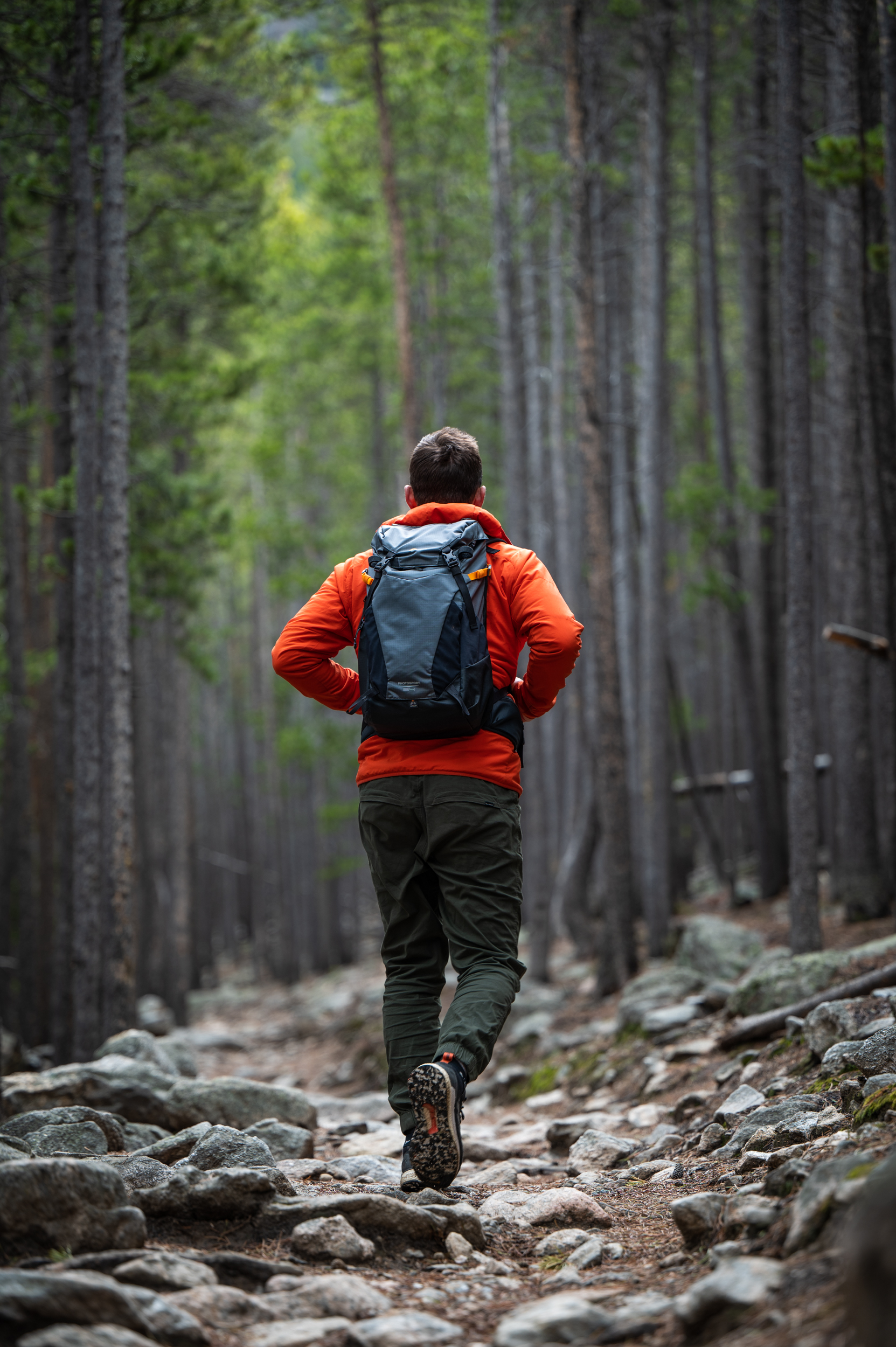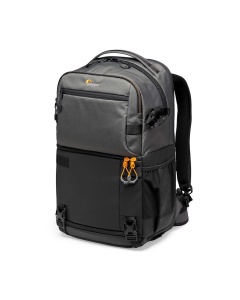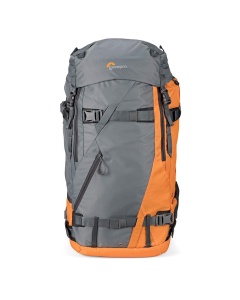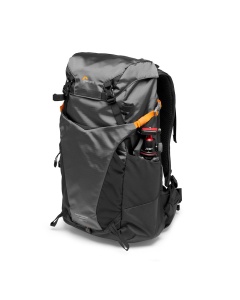Backpacking photography: choosing the right bag
10.08.2021 | Reading time: 10 minutes
Author: Lowepro
When it comes to backpacking photography, you need the right gear— lenses, filters, batteries, maybe a tripod and definitely something to carry it. If you are going to be on the move in the mountains, without a backpack, you won’t be able to trek long distances, so one of the most essential pieces of gear that you’ll need to invest in as you get started in hiking photography is the right bag. Once you start researching packs, you might become overwhelmed with so many models out there, and especially the decision about whether to get a bag that is designed for photography, or hiking. The good news is, there are bags out there that are equipped for both! For people who are trekking long distances to frame the shots that will be the most memorable, there are packs that are both lightweight and will keep all of your gear organized and protected from the elements as well as drops and other unexpected issues that might arise in the great outdoors.
Many photographers want to be in nature year round, backpacking to frame snow-capped images and fall foliage, and that means thinking about gear that can withstand the elements against wind, ice, snow, rain, and extreme heat. Choosing the right bag will depend on your goals for your photography, whether you want to incorporate video, how much gear you are thinking about taking with you, and the distances of your journeys. To help you get started choosing the best backpack for your photography expeditions, here are some bags and tips to keep in mind.
Backpacking essentials
While you probably already have a backpack that could carry all of your gear for a trekking adventure, when you add camera equipment into the equation, you want to take extra precautions to keep these fragile items secure while you are on the move. Some photographers might opt for using a lightweight backpacking pack and putting gear inside with specially-designed camera and lens cases. However, this type of setup may not be the most convenient to stay organized and to be sure that your gear is accessible quickly when you need it.
Professional photographers recommend keeping your gear safe while you are hiking, by investing in what some call expedition backpacks. These professional-grade bags are not only designed for comfort while you are wearing them — like any other trekking pack — they also have built-in protection for your gear and compartments to keep everything organized. The versatility of this kind of bag means that it could be used by a documentary photographer on an assignment in the Himalayan mountain range or Amazon rainforest, or by a semi-professional photographer going on a multi-day trek in a park in their home state.
These bags can really go the extra mile with everything you need and are also built to last. The size and design that you pick will depend on the specific gear that you want to carry and whether you will also need to carry other essentials for longer treks, camping expeditions, or even ski or snowboard adventures.
For example, the Whistler Backpack is designed to be used in four-seasons with multiple access points to get to your gear fast. This is important when you might be on a trek where you can’t have your camera in hand, but want to get to it quickly in a moment’s notice. With enough space for three lenses and a laptop, it has the setup to not only assist you with the gear you need to shoot in the field, but also upload files to your laptop as you go. It even has a support system for skis, tripods, axes, or a snowboard, for the truly adventurous.
The advantage of going with an expedition backpack is that you will literally be ready for any situation that might come up anywhere in the world and in any weather. You can use the bag when you are just starting out with backpacking photography and continue to use it as you expand to getting more gear, like extra lenses and tripods. If you aren’t sure where your backpacking photography might take you, but you are open to shooting in all weather conditions, an expedition pack may be the way to go.
If you are looking for a more modern way of travelling, and you want your backpacking experience to be technology friendly, the Lowepro Fastpack collection is the ideal solution for you. The Fastpack series backpacks allow you to organize camera, laptop, tablet and more, all in one place.


Hiking Photography
If you want to frame majestic landscapes through your photography, hiking is one way to take your creativity into the great outdoors in even just a weekend or day trip.
With hiking photography, in a few hours you could come back with captivating images from your favorite trail. You may find that on a shorter excursion you can get started with practicing your shooting skills, and then move your way up to longer treks. For hiking photography, a light-weight backpack is ideal. You’ll want to evaluate the gear that you’ll use the most, and then go for a backpack that can carry it without being bulky.
For example, you might have several lenses in your photography kit, but bringing them all might not be essential for a short hiking trip. You might find that for hiking photography, you don’t need to carry a large tripod or several lenses, and it could be that one extra lens is sufficient. It really depends on your style. Assess whether you will be shooting landscape shots where a tripod is a must, or need a variety of lenses to frame scenery from different perspectives.
Other essentials, no matter where you are shooting for your hiking trail photography, are extra batteries and memory cards, and microfiber cleaning cloths, and you’ll want a bag that can help you keep these items organized to access them quickly when you need to swap them out.
Aside from your photography gear, you’ll also want to carry along everything you need for your hike, like extra clothing layers, water, food, and maybe even camping gear. When researching hiking backpacks, you want one that will combine freedom of movement with keeping your gear safe and easily accessible. And if you are a true adventurer, you cannot miss the Lowepro Photo Sport backpacks, modular with recycled fabric and ideal for photo hikers.


Trekking Photography
For more extreme adventures, you might be moving into the realm of trekking photography. With trekking photography, you could be venturing off into trails that are in the true wilderness of back country and your adventures might last multiple days. That means extra batteries and memory cards will be a definite must, as well as your standard backpacking gear. If you are planning to spend a lot of time on trekking expeditions, you could consider the Pro Trekker backpacks, designed for DSLR and mirrorless cameras and ideal for an outdoor experience.
Another option could be a backpack for back country photography, like the Powder Backpack. For example, an advantage of the Powder Backpack is that it’s designed for both camera gear storage and the other essentials for trekking, with half of its storage organized for photo gear and the rest for everything else like food, water, and clothing. This can be a winning combination when you need one bag that can serve multiple functions.
Another pro-tip is to do a test with all of your gear before you venture off into the wilderness, by taking a city trek. That way, you can see which bag is truly right for you and your gear before you go off on your next full-scale trekking adventure. Some features to pay attention to are how you feel wearing your pack and carrying the weight with it full, and if your pack’s design provides the kind of gear accessibility that you need on the go. If you still aren’t convinced, try another bag until you find the one that will be your best fit. As you get more experienced, you may also find that you need a couple of bags to fulfill all of your backpacking photography needs.
Picking a backpack that keeps everything organized and secure will give you one of the necessary tools you need to frame images that you’ll be proud to show off when you are back from your adventure.























